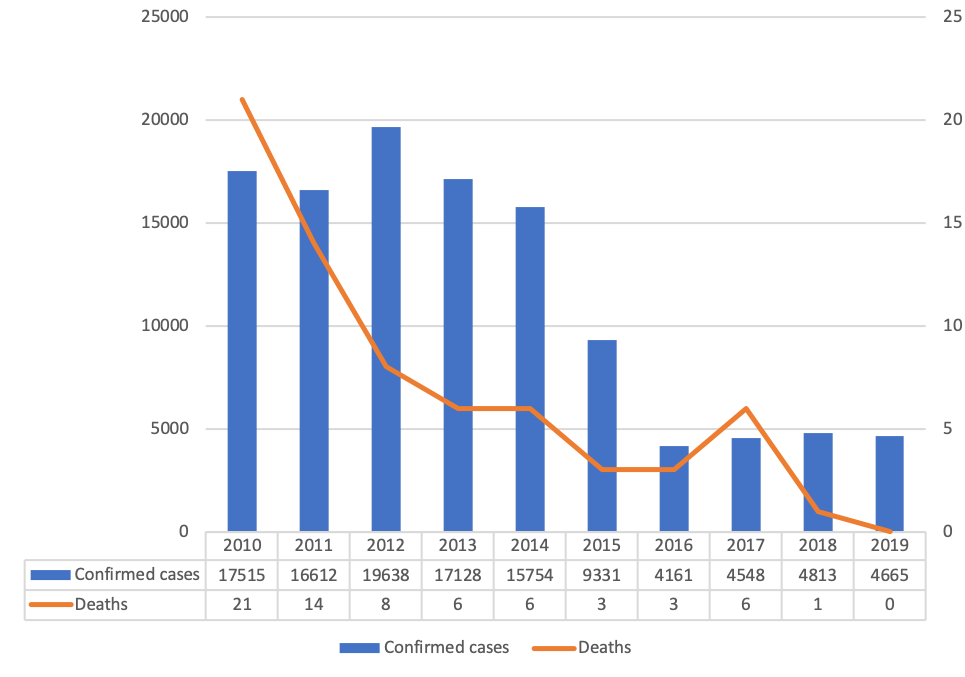Evaluation of the Program’s Efficacy
National Program Efficacy During 1990–2020
In the two decades prior to the NMCEP’s implementation in 1991, Việt Nam had experienced uncontrolled malaria outbreaks due to multiple factors including insufficient resources and infrastructure, migration after the American War ended in 1975, and a litany of shortcomings of an overstretched public healthcare system (Figure 5). Extensive efforts were made over the years to maintain regulation of malaria transmission, involving organizational committees at national and regional levels, national as well as global funding, and the provision of dedicated resources. It is critical to periodically evaluate the efficacy of the program in order to refine future interventions to optimize efficiency and effectiveness.

From 2011 to 2020, Việt Nam achieved notable results in malaria control and elimination, which was attained over two 5-year periods: phase 1 (2011–2015) and phase 2 (2016–2020). The first phase’s main objective involved lowering incidence and mortality rates, adopting the policy proposed in 2009 to prevent reintroduction of outbreaks in 16 provinces and to achieve eradication in 14 provinces categorized as of low endemicity (MoH, 2011). Sustaining this aim, the second phase devoted more attention to resources for other areas with persisting malaria status, together with re-evaluating the previously targeted 16 and 14 provinces to ensure that control and elimination is maintained. According to the NMCEP, across the decade 2010–2019 there was a significant 73.4% and 100% decline in confirmed cases and malaria-related deaths, respectively (MoH, 2020) (Figure 6). Despite the overall downward trend, 2017 saw a slight rise in confirmed cases. This may be attributed to a combination of factors such as a sudden outbreak of malaria, population migration, and failure to restrict the proliferation of malaria through dihydroartemisinin-piperaquine treatment.

